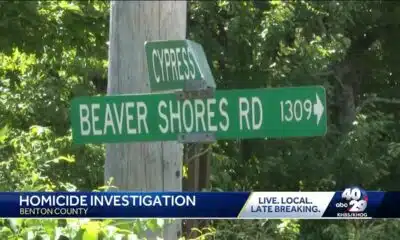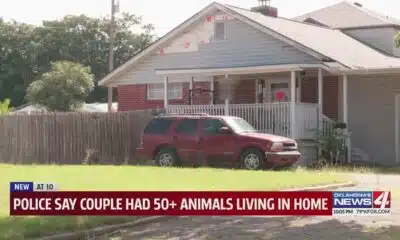News from the South - North Carolina News Feed
Why does flying have to be such a nightmare? • Asheville Watchdog

Flying makes me philosophical.
By that, I mean it makes me ask a lot of existential questions, such as:
Do airlines know how to tell time?
Do airlines understand what size most American adults are these days?
Why do airlines load passengers from the front of the plane to the back of the plane, when the reverse would clearly be more efficient?
How did my life choices lead to me sitting in this impossibly uncomfortable chair with my shoes stuck in my backpack straps below the seat in front of me while a grown-ass woman behind me drunkenly yells at her boyfriend to, “Shut the (bleep) up!” at least a hundred times during one three-hour flight?
Why hasn’t anyone invented a conveyor system for carry-on baggage that would just zip it right off the plane to the waiting area?
And finally, when will we just be able to beam ourselves to the desired destination, a la Star Trek, preferably without our DNA getting all scrambled up?
You may have deduced that I’ve been doing some flying lately, and you are correct. My wife Grace and I have recently taken two trips — a long weekend excursion in March to see our son who lives in San Antonio, Texas, and a weeklong adventure in early April to three national parks in Utah.
Two drunks behind me, and yes I got tickled
The Utah trip was uneventful as far as connecting flights and being on time, so kudos to United Airlines for a job well done.
The San Antonio trip was another matter entirely.
On Thursday, March 20, we were trying to fly from Asheville to Charlotte, then on to San Antonio, all via American Airlines. We arrived in plenty of time at the Asheville airport — two hours ahead of boarding, as is recommended — but the plane was an hour late arriving at AVL because of “crew issues,” the gate employee said.
We had about a 40-minute connection in Charlotte, and as we had to trek two terminals away, we figured we were not going to make the connecting flight to San Antonio. So we canceled the flight and rebooked for the next morning.
But as we prepared to leave, a very nice and professional manager assured us our flight would arrive in Charlotte only 10 minutes behind schedule, in plenty of time to make our connection to San Antonio. He also went on the public address system to tell the other passengers the same information — that everyone should make their connecting flights.
So we then rebooked again our original plan.
We did indeed land in Charlotte about 10 minutes late — but then we had a long wait on the tarmac to reach a gate, with two planes in line ahead of us.
The clock was ticking, and not in our favor.
You may have deduced from my affinity for beer that I’m not exactly a runner, as I’m six feet tall and let’s just say well over 220 pounds. Still, my wife and I, who are both 61 years old and unwisely scrappy, attempted to run/jog/awkwardly speed-walk to the gate, pulling suitcases, backpacks and my trusty CPAP machine.
We missed the San Antonio flight by three minutes. The flight attendant walking away from the gate said curtly, “The flight is closed.” We could see the damn plane still at the gate, with the jet bridge still attached, but no dice — once it’s closed, you’re spending the night in a hotel.
American did pay for our hotel that night and gave us each $12 meal vouchers, which I’ll note covered 11 French fries and the top of the sandwich bun. Really, do they not realize that even Taco Bell runs about 15 bucks a person these days (and that comes with a voucher for Immodium)?
The rebooked morning flight was a doozy, leaving at the crack of dawn. We had to arrive at the airport at 3:30 a.m. for a flight departing at 5:30 a.m., so obviously, we didn’t sleep much.
At the gate while we waited, I noticed an extremely drunk couple who were constantly arguing with one another and generally being annoying. I told my wife, “I guarantee you they’ll end up right behind us.”
I was half right. Grace was seated a few rows ahead of me and on the opposite side of the aisle, so she missed all the fun. Besides the woman constantly cursing at her boyfriend, she also flipped out while the plane was taxiing, running down the aisle in fright and hollering.
I kid you not.
Even before that the captain had come back to talk to them, asking if they were OK to fly and noting that if he had to divert the plane because of their behavior, that would be a federal offense. They offered assurances they would behave.
These folks looked to be in their late 20s, maybe early 30s, so it’s not like they were kids.
After the taxiing incident, the flight attendants made numerous appearances, telling the couple firmly to calm down and extracting promises that they would behave. The dude, who I must note was wearing pajama bottoms in public, had an annoying habit of adding “Mum” to everything he said to the female attendants, as in, “We won’t be a problem, Mum,” and “Thank you, Mum.”
I strongly wanted to smack him at this point and scream, “You’re not British, you bloody plonker!”
They continued to make a scene during most of the flight, eliciting another philosophical question for me: Why can’t drunk people who’ve been up all night just go the hell to sleep? Trust me, it feels great.
At one point, the woman kind of tickled me in the ribs — swear to God. I turned around with a look that would burn holes in space shuttle tiles, and she apologized. So I let it go.

When we landed in San Antonio about two and a half hours later, the pilot came on to say we had a long taxi and to keep your seatbelts fastened. The ding dong then realized she hadn’t had hers fastened for the entire flight and proceeded to flip out again, wailing, “I don’t feel safe! I don’t feel safe!”
At this point, the guy next to me had had it, stood up and firmly told her to just be quiet, that she had ruined the entire flight for everyone around, we were five minutes from the gate and she just needed to chill. Oh, also she had apparently been tapping him on the back of head during the flight.
He was way nicer than I would’ve been, Mum.
The upshot is we arrived in San Antonio exhausted and really frustrated. Two days in we just crashed and slept in until 10:30 a.m., which is pretty much unheard of for us these days.
I sent American Airlines media relations folks a long list of questions about this experience, but I didn’t hear back by deadline. Yes, they were late again.
One of my questions was, “What does ‘crew issues’ actually mean? Someone called out sick? Crew got delayed?” An American Airlines employee at the gate said it could include a range of issues, including sickness, being stuck in traffic or being involved in a car accident.
Fine. But they really should have a backup plan. And they also shouldn’t tell people they’re going to make their flight when the chance of actually making it is pretty small.
When we missed ours in Charlotte, about two dozen fellow travelers were in line with us rebooking flights, including one family with three kids. That’s a lot of people to inconvenience.
Late flights are all too common
It’s clear that airlines are understaffed, and we Americans are flying more than ever — not a great combination. Airlines for America, the trade association for the leading U.S. airlines, says more Americans are flying now than ever before — a record 158 million passengers are expected to take to the skies during this spring’s travel season.
So airports are crowded and flights get “stacked up” — we witnessed this at Chicago’s O’Hare Airport, where we taxied for about two days to get to the terminal, and at the Charlotte and Salt Lake City airports, where you’re lined up for take off like hungry customers at a taco truck.
Depending on your point of view, airlines are doing a pretty good job of getting us to and from the far distant places we like to vacation in. The federal Bureau of Transportation tracks all this, and here’s their chart on annual airline on-time rankings from data gathered from 2003-2024.
- Hawaiian Airlines: 83.58 percent.
- Delta Air Lines: 82.02
- United Airlines: 79.14
- Southwest Airlines: 78.57
- Alaska Airlines: 77.43
- Allegiant Air: 76.77
- American Airlines: 75.91
- Spirit Airlines: 74.48
- JetBlue Airways: 73.06
- Frontier Airlines: 69.50
The average for all carriers came in at 78.10 percent, which is about the grade that I passed high school chemistry with, so that seems not horrible-ish to me. But that still means they’re not on time 22 percent of the time, which ain’t great, either.

I realize that all of this is a first world problem — well, sort of. Airlines for America tells us, “Nearly 90 percent of Americans have flown commercially, with adults aged 18-24 having had the highest propensity to fly in 2024.” And, “More than two-thirds of Americans with household incomes under $75,000 have flown in the past five years.”
So we’re all flying more and dealing with all of these frustrations.
In the aviation world, lateness refers to any flight departure or arrival that’s more than 15 minutes late. The Sheffield School of Aeronautics in Florida notes that reasons for lateness include extreme weather, heavy airplane traffic at airports (which can often cause a ripple effect down the line), waiting for connecting passengers, or baggage and mechanical problems.
Clearly, some factors, like weather, are out of their control. But I also feel like airlines need to hire more people, which would likely involve boosting salaries.
And Lord knows whatever those wonderful American Airlines flight attendants were being paid on our nightmare flight to San Antonio was woefully inadequate.
Some tips, and a word about improvements coming to Asheville Regional
I love to bother Asheville Regional Airport spokesperson Tina Kinsey with any and all flying questions, even though the airport does not control the airlines, an important point to remember. Sure, Asheville Regional is a bit of a nightmare itself in some regards these days, as it’s going through a major renovation — more on that in a minute.
First, I asked Kinsey for some perspective on flying and the seemingly inherent frustrations. Of course she offered a positive take.
“I love my air travel days, even if my itinerary gets changed, because even after all these years of working in aviation, I am still amazed by the accessibility of the world within just a few hours of time,” Kinsey told me. “How else can we experience new far-away places, adventures, cultures, experiences?”
That is a fair point — it is pretty amazing to be in Asheville in the morning and in Arches National Park in Utah by evening, like we did. Kind of crazy if you think about it.
Honestly, I don’t know why the Mormons didn’t just fly out there back in the 1800s.
Kinsey also offered a few tips for improving the flight experience.
“For instance, when you book your flight, pay attention to the connection time at your connecting airport,” Kinsey said. “If you don’t want the stress of possibly missing your connection if your originating flight gets delayed, pad your itinerary with a longer connection time.”
We’ve learned that the hard way.
Kinsey also suggested downloading your airline’s app for immediate updates about changes to your flight’s itinerary. I can confirm that this is excellent advice, and that United was really great about sending text updates about upcoming gates and where our luggage was (American…not so much).
Kinsey also suggested bringing snacks, comfort items and some entertainment.
“My favorites are my iPad and headphones with downloaded movies or podcasts, my oversized wrap that I can use as a blanket, a few snacks and my empty water bottle that I can fill before boarding,” Kinsey said. “If my husband and I are traveling together, we always have a deck of cards and have even made temporary ‘airport friends’ over friendly games of poker, euchre or hearts.”
If she’s traveling for business, Kinsey brings a laptop and has projects ready to work on. I’m assuming this includes answering incessant Answer Man questions from yours truly.
She’s also a fan of walking about the airport and people watching, which I must admit I do, too.
“And last, I find that the airport and airline employees I encounter when traveling are generally very helpful, especially if I approach them with courtesy,” Kinsey said. “I work with so many local aviation team members, and I can tell you that they are dedicated and helpful. They are our friends and neighbors, doing work that they care about, and smiles and courtesy in both directions go a long way.”
I do salute the employees, especially the flight attendants, because at times they’ve got a really tough gig.
More parking shuttles
Now, as some of our suffering does begin at Asheville Regional, I also asked Kinsey when the enormous renovation project is going to be done, and if they’ve done anything to alleviate parking woes. The airport has an ongoing $400 million expansion, called AVL Forward, that will increase terminal size by 150 percent, boost the number of gates to 12, from the current seven, and provide new bathrooms; a food, beverage and retail plaza, and multiple mini-galleries to display local art.
Kinsey said phase one of the project opens this June — ticketing by June 11, new north concourse on June 25. The first phase of an expanded baggage claim will open in early 2026.
Phase two is slated to open in late 2027, with phase three final construction for back-of-the-house areas completed by spring 2028.

On parking, Kinsey mentioned they recently added the Shuttle Lot South, with about 600 spaces, “and the addition of more shuttles has improved the parking experience significantly.”
‘Additionally, the real-time parking availability data that we publish on the home page of our website has helped customers make parking decisions ahead of arriving at the airport,” Kinsey said. “We are continuing to add more surface parking in anticipation of future growth, to accommodate passengers until we construct a second parking garage.”
Grace and I traveled in fair weather, so we were just cold walking to and from the planes, as AVL right now doesn’t have covered jet bridges. We both said it must be miserable if you’re traveling in the rain and have to dash from the covered area by the gate and up the zig-zag ramp to get on the aircraft.
“The airport provided long covered walkways for our customers, and in inclement weather, most airlines typically stagger boarding in the uncovered areas and provide umbrellas,” Kinsey said.
In conclusion, I’d like to ask airlines to hire more people, make the seats more comfortable, be realistic if your flight isn’t going to make it, and give drunken fools the boot instead of the benefit of the doubt.
Oh, and please don’t force tubby 61-year-olds like me to run through airports. It’s just undignified.
Asheville Watchdog welcomes thoughtful reader comments about this story, which has been republished on our Facebook page. Please submit your comments there.
Asheville Watchdog is a nonprofit news team producing stories that matter to Asheville and Buncombe County. John Boyle has been covering Asheville and surrounding communities since the 20th century. You can reach him at (828) 337-0941, or via email at jboyle@avlwatchdog.org. To show your support for this vital public service go to avlwatchdog.org/support-our-publication/.
Related
The post Why does flying have to be such a nightmare? • Asheville Watchdog appeared first on avlwatchdog.org
News from the South - North Carolina News Feed
What is Chronic Venous Insufficiency? Will Trump be okay?
SUMMARY: President Trump has been diagnosed with chronic venous insufficiency, a common condition in people over 70 causing leg swelling due to blood pooling in veins. The White House confirmed no deep vein thrombosis, arterial disease, or heart issues were found, with normal cardiac function and no signs of systemic illness. Despite visible ankle swelling and bruised hands, attributed to frequent handshaking and aspirin use, the president remains in excellent health and experiences no discomfort. At 79, he stays active, working continuously. The White House emphasized these symptoms are minor and consistent with his busy public engagements and cardiovascular prevention measures.
Swollen legs led to President Donald Trump being diagnosed with what’s called chronic venous insufficiency. It’s a fairly common condition among older adults but requires a thorough checkup to rule out more serious causes of swelling in the legs. Here are some things to know.
Chronic venous insufficiency, or CVI, happens when veins in the legs can’t properly carry blood back to the heart. That can lead to blood pooling in the lower legs. In addition to swelling, usually around the feet and ankles, symptoms can include legs that are achy, heavy feeling or tingly, and varicose veins. Severe cases could trigger leg sores known as ulcers.
WRAL App: https://www.wral.com/download-wral-apps/5787234/
The Latest Weather: https://www.wral.com/weather/page/1010362/
News Tips:
Online – https://www.wral.com/report-it/
Email – assignmentdesk@wral.com
Subscribe to WRAL:
https://youtube.com/c/wral5
Follow WRAL:
Facebook: https://facebook.com/WRALTV
X: https://twitter.com/WRAL
IG: https://instagram.com/wral
About WRAL-TV:
WRAL is your Raleigh, North Carolina news source. Check out our videos for the latest news in Raleigh, local sports, Raleigh weather, and more at https://WRAL.com
#localnews #northcarolina
News from the South - North Carolina News Feed
US House votes to yank funding for NPR, PBS, foreign aid, sending bill to Trump’s desk
SUMMARY: On July 2, 2025, the U.S. House approved legislation to cancel $9 billion in previously authorized spending on public broadcasting and foreign aid, marking only the second time in over 30 years Congress approved a presidential rescissions request. The 216-213 mostly party-line vote sends the bill to President Donald Trump for signature. The Corporation for Public Broadcasting will lose $1.1 billion in funding for NPR, PBS, and local stations. The bill also cuts $8 billion in foreign aid but protects HIV/AIDS, tuberculosis, malaria, and maternal health programs. This follows Senate approval with some adjustments and reflects the White House’s push to focus spending on American interests.
The post US House votes to yank funding for NPR, PBS, foreign aid, sending bill to Trump’s desk appeared first on ncnewsline.com
News from the South - North Carolina News Feed
Missing voter information the objection of NC search
North Carolina State Board of Elections Executive Director Sam Hayes is setting off on a mission to correct 103,000 North Carolinians’ voting records from which some information is missing.
He maintains that the process, dubbed the Registration Repair Project, will not remove any eligible voters from the state’s voter rolls.
According to the state elections board, 103,270 North Carolina registered voters have records that lack either their driver’s license number, the last four digits of their Social Security number or an indication that they have neither.
[Subscribe for FREE to Carolina Public Press’ alerts and weekend roundup newsletters]
Last year, this missing information became the stuff of headlines, lawsuits and the high-profile election protest of Republican Court of Appeals Judge Jefferson Griffin, who lost his bid for state Supreme Court to the incumbent justice, Democrat Allison Riggs, by 734 votes.
In April, the North Carolina Supreme Court declined to remove ballots from the count based on missing identification numbers; they said the state elections board, not voters, was responsible for a faulty voter registration form that didn’t make it abundantly clear that this information was required.
While Griffin lost, the issue he raised remains salient for a newly Republican elections board and the U.S. Department of Justice, which promptly sued the state board over alleged violations of the federal Help America Vote Act’s voter registration provisions.
Thursday, Hayes told reporters that a process he unveiled in late June to gather these missing identification numbers had begun in earnest.
“We must put this issue behind us so we can focus our attention squarely on preparations for accurate and secure municipal elections this fall,” he said.
The plan to collect missing information
There are two groups of voters under Hayes’ plan.
The first group includes registered voters who have never provided a driver’s license, the last four digits of their Social Security number or an affirmation that they lack both. The state elections board has asked county election boards to check their records for these numbers, in case they were provided but not correctly entered into the voting system.
In early August, the state elections board will send letters to the remaining voters in this group requesting the missing information. If affected voters do not comply, they will vote provisionally in future elections. The elections board will create a flag on these voters’ records for poll workers.
The second group includes registered voters whose records do not show that they’ve provided an identification number, but have shown additional documentation at the polls proving their identity and eligibility under HAVA. These voters may vote a regular ballot.
However, the elections board will still send them a letter in a second mailing asking for the missing identification number to bolster the state’s voter records. Even so, if they do not oblige, they still will not be at risk of being disenfranchised, NCSBE General Counsel Paul Cox said.
County election boards have already made progress, and their work will continue as the mailings go out, Hayes said.
Voters can check to see whether they’re on the list of those with missing information by using the Registration Repair Search Tool. If voters don’t want to wait for the August mailing, they can submit an updated voter registration form using their driver’s license through the online DMV portal or visit their county elections board in person with their driver’s license or Social Security card.
“We anticipate the number of voters on the list will decrease quickly as word spreads about this important effort,” Hayes said.
The State Board of Elections unanimously approved the plan last month, despite some concerns from Democrat Jeff Carmon about putting up an extra obstacle for voters because of a problem with missing information that the voters didn’t cause.
“It’s hard to understand starvation if you’ve never felt the pangs of hunger,” Carmon said. “It’s the same situation with voting obstacles. Your perspective of an obstacle may not be the same as someone who’s consistently had their identity and their validity questioned.”
Nonetheless, Carmon and fellow Democrat board member Siobhan Millen ultimately voted in support of the plan.
Same ballot, different rules
Normally, when a voter casts a provisional ballot, the county elections board determines whether their ballot counts by the post-election canvass, held nine days after an election.
Voters may have to provide documentation or information to prove their eligibility to vote in order to be accepted.
The same process applies to the 103,000 affected voters, with a catch. Their vote may be accepted for federal contests, but not state contests, due to a difference in law.

According to the DOJ’s interpretation, the National Voter Registration Act requires all provisional votes of “duly registered voters” to count, Cox said.
But the state elections board has interpreted the state Supreme Court and North Carolina Court of Appeals’ decisions in the Griffin case as requiring a driver’s license, the last four digits of a Social Security number or an affirmation that a voter has neither before accepting their votes in state and local contests.
Under a recent election law change, county election boards have three days to validate and count or reject provisional ballots.
But sometimes, mismatches happen during validation due to database trouble with reading hyphenated names or connecting maiden and married names, for example, Cox said. The board has designed a “fail safe” in case this comes up.
When there’s a mismatch during the validation process, state law allows voters to provide additional documentation — like a driver’s license, bank statement or government document with a voter’s name and address — to prove their eligibility.
“A big chunk of these voters will have already shown HAVA ID, and that’s because in the past, when this information was not supplied, the county boards would still require these voters to show that alternative form of HAVA ID when they voted for the first time,” Cox said.
Poll workers will ask provisional voters to provide this additional documentation so that they can mark it down for later, if validation doesn’t work, he added.
Democrats threaten countersuit
Last week, the Democratic National Committee threatened the state board with litigation if they went ahead with their plan regarding those with missing information.
The letter claimed that the plan would remove eligible voters from the rolls illegally.
Hayes disagrees. In his view, he’s just following the law.
“It’s not the fault of the voters,” he said. “But at the same time, we’re required by the law to go back and collect this information, which should have been done at the time, and it certainly should have been done in the intervening time.”
He also clarified that North Carolina’s photo voter ID requirement won’t suffice for the impacted voters. They still have to vote provisionally so that their identification numbers can go through the validation process, he said.
As for whether his fully fleshed out plan will appease the DNC?
“We hope so,” Hayes said.
This article first appeared on Carolina Public Press and is republished here under a Creative Commons Attribution-NoDerivatives 4.0 International License.
The post Missing voter information the objection of NC search appeared first on carolinapublicpress.org
Note: The following A.I. based commentary is not part of the original article, reproduced above, but is offered in the hopes that it will promote greater media literacy and critical thinking, by making any potential bias more visible to the reader –Staff Editor.
Political Bias Rating: Centrist
This article presents a balanced and factual report on North Carolina’s voter registration issue, focusing on the administrative process and legal context without overt editorializing. It includes perspectives from both Republican and Democratic figures, highlights legal rulings and procedural details, and covers concerns from Democrats alongside the state elections board’s explanations. The language is neutral, aiming to inform about the complexities of voter ID requirements and the Registration Repair Project without endorsing a particular political stance or framing the issue through a partisan lens.
-
News from the South - Tennessee News Feed5 days ago
Bread sold at Walmart, Kroger stores in TN, KY recalled over undeclared tree nut
-
News from the South - Arkansas News Feed7 days ago
Man shot and killed in Benton County, near Rogers
-
News from the South - Georgia News Feed1 day ago
Aiken County family fleeing to Mexico due to Trump immigration policies
-
News from the South - Alabama News Feed6 days ago
Girls Hold Lemonade Stand for St. Jude Hospital | July 12, 2025 | News 19 at 10 p.m. – Weekend
-
News from the South - Georgia News Feed7 days ago
Anti-ICE demonstrators march to Beaufort County Sheriff's Office
-
News from the South - Oklahoma News Feed7 days ago
Police say couple had 50+ animals living in home
-
Mississippi Today4 days ago
Coast judge upholds secrecy in politically charged case. Media appeals ruling.
-
Local News5 days ago
Oyster spawning begins as MDMR-USM Hatchery Program enters production phase using mobile hatchery










































